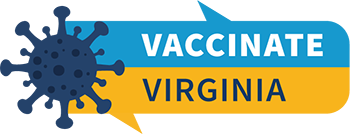Influenza
"The flu" is a contagious respiratory virus that can cause mild to severe illness. There are two main types: Type A and Type B, with each type having various strains that can change annually. Flu season typically starts in the fall and continues throughout the winter.
For more information: click here
To access 2022-23 Influenza Surveillance: click here
Droplets are released when a sick person talks, coughs or sneezes, and they can land in the mouths or inhaled through the noses of others. Individuals can also contract the flu by touching their mouths or noses after touching contaminated objects but this is less likely to occur. People are infectious 1 day before symptoms appear and 5-7 days after becoming sick. Symptoms typically appear 1-4 days after exposure.
Symptoms include sudden onset of fever, chills, cough, sore throat, congestion, headache, fatigue, and muscle aches. In children, vomiting and diarrhea may occur. Most people recover within a few days to less than two weeks but some can develop severe or life-threatening illnesses, such as pneumonia.
Resting, drinking fluids, and taking over-the-counter medicines for fever and discomfort are the usual treatments. Physicians can prescribe antivirals to reduce flu severity. Aspirin should not be given to children with fever-causing illnesses and antibiotics are not used to treat the flu.
Get vaccinated, cover your mouth and nose, wash your hands with soap, avoid touching your eyes, nose, or mouth, stay home if sick, avoid close contact with sick people, clean contaminated surfaces, and take prescribed antivirals.
Everyone aged 6 months or older, especially individuals that are considered high risk such as pregnant women, older adults, and people with chronic diseases or serious medical conditions.
3 Things You Need To Know About Flu & Chronic Health Conditions
Respiratory Syncytial Virus Infection (RSV)
RSV is a respiratory virus that usually causes mild cold-like symptoms; however, it can cause serious lung infections in older adults, people with medical conditions, and especially children.
For more information: click here
RSV spreads from person to person through droplets when a sick person coughs, sneezes, or talks and can land in the mouths or noses of other people or be inhaled into their lungs. It can also spread through direct contacts such as kissing, and indirect contact by touching a contaminated object and then touching your mouth, nose, or eyes. Sick people can infect others 1 to 2 days before symptoms develop and are contagious for 3 to 8 days after getting sick. Symptoms usually start 4 to 6 days after infection.
Symptoms include fever, runny nose, decreased appetite, cough, sneezing, and wheezing. Symptoms usually appear in stages and not all at once. In severe cases, difficulty breathing and changes in skin color due to lack of oxygen. Most children and adults recover in 1 to 2 weeks but some can develop a severe or life-threatening infection that requires hospitalization, especially infants and those with chronic heart or lung problems.
Treatment for RSV involves supportive care which is over-the-counter medication to reduce fever, fluids, and rest.
There are currently no vaccines for RSV but to reduce the risk of infection, individuals should cover their mouth and nose, wash their hands with soap, avoid touching their eyes, mouth, and nose, stay home when sick, avoid close contact with sick people, and clean contaminated surfaces.
RSV: A Virus You Should Know
Coronavirus Disease 2019 (COVID-19)
COVID-19 or COVID is a respiratory infection caused by the severe acute respiratory syndrome coronavirus 2 (SARS-CoV-2) and it was first identified in 2019 in the Wuhan Province in China. The virus spread throughout the world which resulted in a pandemic and millions of infection.
Coronavirus can infect and cause disease and humans and animals. There are seven types of coronavirus that infect humans, with four causing mild respiratory infections and the remaining three causing more severe respiratory infections including SARS-CoV-2.
Droplets are released when a sick person talks, coughs or sneezes, and they can land in the mouths or inhaled through the noses of others. Individuals can also contract the virus by touching their mouths or noses after touching contaminated surfaces. Also, people who are 6ft or less from infected people are likely to get infected.
Symptoms may appear 2-14 days after exposure. They can range from no symptoms (asymptomatic) to severe illness that can result in hospitalization or death. Symptoms include fever, chills, cough, shortness of breath, fatigue, muscle aches, headaches, loss of taste or smell, sore throat, etc. Higher risk individuals may experience additional symptoms such as trouble breathing, chest pain, confusion, inability to wake or stay awake, and changes in skin, lip, or nail bed color.
Monclonal antibodies help fight off COVID-19 and antivirals prevent the virus from spreading through the body. For those who are not at high-risk for severe illness supportive care may be recommended. Supportive care includes fluids, rest, and fever-reducing medication.
There are several ways to slow the spread of COVID including:
- Getting vaccinated and stay up to date on your vaccines/boosters
- Wear a mask if you have symptoms or after and exposure; Also, you may choose to mask indoors based on community levels
- Avoid areas with poor ventilation
- Get tested if you have symptoms or have been exposed
- Wash your hands
- Avoid contact with sick people
- Clean surfaces



